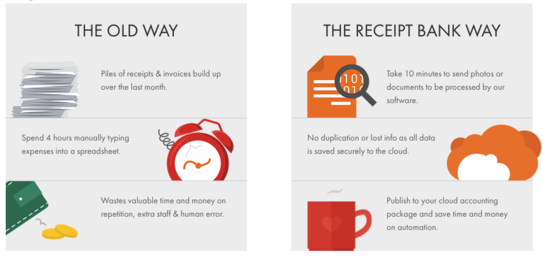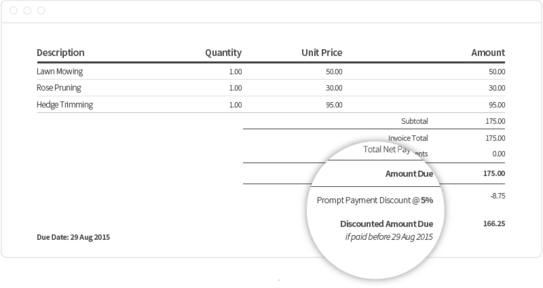How to select an ERP System
Nothing will impact a businesses ability to maintain long-term growth like the implementation of an effective ERP system. However when it comes to selecting and implementing an ERP system, if you get it wrong you’ll pay the price. Replacing an ERP system is akin to performing brain surgery while the patient is awake and solving a Sudoku. Not only are you severely overhauling every process in place within your business, but you are also attempting to continue trading like normal.
Fortunately it is possible to make this transition successfully, and in fact many companies do manage to implement an ERP system with minimal business disruption. The difference between those companies that do and do not achieve this is the careful planning, management and execution of an ERP project. The implementation of an ERP system should be treated and managed as such to ensure that the scope is understood, and that any risks of disruption are minimised. This rule applies to all, whether you’re a mom and pop shop or a gargantuan multinational.

The first step to take before embarking on the implementation of an ERP system is to clearly define the rationale behind this decision. Things you should be considering will relate to your current system and whether it can foster your business needs now/in the future. Another aspect that should be analysed are the processes within your current system and whether they support your staff. Having to perform workarounds or data entry across different spreadsheets and systems would be an example of an unscalable process that will ultimately cost your business in lost productivity. An inability to respond to your customers with accurate information in a timely manner will result in lost opportunity, and therefore lost revenue. There may be any number of factors pertaining to your unique situation that should be considered to give yourself the ROI of implementing a new ERP system.
Once you have identified the approximate ROI of implementing a new ERP system, you should then take note of some benchmarks to allow you to measure the outcome. Information you could collect about your current situation may include (but not limited to):
Inventory Accuracy %: Inventory Count in System vs. Real Inventory Count
Inventory Sell-Through Rate
Production Lead Time (if applicable)
Quote-to-Order Conversion %
Average Order Fulfilment Time
Average Lifetime Customer Value
This information will be very valuable to you in measuring the impact of your new ERP system and will allow you to set goals of where you need to be.

Once you’ve got your measurable outcomes documented down, the next key step of the process is to achieve buy-in from your staff. This is important as the end users of your current system will have the low-level insight into your business processes in practice that high-level management may not see. With this information you can start forming categories of functionalities; typically these are your mission critical functions, important functions and nice to have but not essential functions. It is a good idea to go into this exercise visualising your measured KPIs and goals to figure out what is most important for your organisation.
Given that most ERP systems will handle core business processes well, the key to selection lies at the fringes - these are the functions specific to your industry or business. At this stage you should begin engaging with software vendors with your unique business requirements. Keep in mind when engaging with vendors that you’re not looking for the product with the most impressive features, you’re looking for an ERP system that provides a solution to your requirements. Working with an ERP project specialist like Alt Shift simplifies this initial phase to one single point of communication with an unbiased view on the different ERP systems available. Your ERP consultant will work with you to provide an assessment and make a recommendation on a solution. Leveraging our relationships with the different software vendors, we will be able to negotiate a contract on your behalf to ensure you get the solution best fit for your business for the best price.
Replacing your ERP System
Your ERP system is ingrained in everything your business does, understandably the notion of replacing your ERP may send shivers down your spine. Yet if the very lifeblood of your business is affecting your agility in responding to market/competitor trends, then quickly the idea becomes a necessity. Since the implementation of a new ERP system is a massive commitment of time and resources, how can you gauge whether a replacement is required?

The first and most important question to ask yourself about your existing system is this: Does my current system support the needs of the business? Aspects you could look at to answer this question include the system’s ability to cater to the bread and butter of your business, the system’s responsiveness and your staff’s ability to leverage the system’s capabilities. Another important factor to consider is whether your current system gives a path for growth into new and innovative technologies (IoT, Business Intelligence, collaboration etc).
If you are heavily reliant on spreadsheets and workarounds in your current system, you leave a lot of headway for your competitors to out-pace you on price, lead-time and customer service. If your current system is unable to foster the growth and change your business needs to keep up, the ultimate cost is lost opportunities which therefore leaves revenue on the table.

The cloud based ERPs of today are impressively flexible and user friendly. They also offer a platform that allows your business to easily adapt and scale as needs evolve over time. The net result of a properly implemented ERP solution will aide you with achieving these objectives:
Increased customer satisfaction
Improved cash-flow and decreased outstanding receivables
Increased opportunities
Decreased costs through efficiencies
Improved sell-through rate (inventory turnover), less capital tied up in inventory
If you are coming to the conclusion that your business may need a heart transplant, get your best people together internally and start identifying the key areas where change needs to happen. After you have properly identified where your trouble lies, you need to determine the correct time to implement. Many ERP projects fall over as the business was not ready for change. However when executed properly, the implementation of a new ERP will take your business to the next level. Alt Shift is an ERP project consulting firm with many successful ERP implementations from all sorts of industries under our belt. Have a chat with us to discuss your business requirements.
Why move your business to the Cloud?
Cloud computing is quickly becoming one of the biggest and most revolutionary technological movements in business. “Cloud” is a catch-all term that encapsulates everything from storing files on a commercial service like iCloud or Dropbox, right down to remotely hosting and maintaining the entire internal infrastructure of a Fortune 500 company. At its most basic definition, cloud computing is the outsourced rental of storage or processing resources, as opposed to hosting/managing your own hardware.
Business systems such as ERP or CRM software that are hosted in the cloud tend to follow the SaaS model (Software as a Service). SaaS based licensing tends to take the form of monthly or annual payments, as opposed to the initial outlay of capital that typically is required for on-premise deployments. There is no server hardware to purchase or updates to operating systems and software, this is managed by the software or hosting vendor and is included in the subscription price. The hosting costs of an on-premise implementation that are often overlooked include backups, disaster recovery, load balancing of processes at peak times and security. The beauty of SaaS systems are the economies of scale, to the end user the delivery is similar but often at a cost saving. As a businesses needs change, the SaaS model offers scalability with the addition of users and modules being a quick and painless affair.

There are two types of cloud deployment to be aware of, single-tenanted and multi-tenanted. A single-tenanted implementation is essentially the same as an on-site implementation except that the hosting is outsourced. This, in essence, is the rental of off-site server hardware where a traditional ERP system would be run. Multi-tenanted SaaS software is one underlying application with businesses each having their own separate and secured database. Multi-tenanted SaaS software benefits from the ability to make updates and changes to the core application, and roll these out to users instantly ensuring users are always up-to-date.

When selecting an ERP system for your business, one thing to be aware of is cloud adaptations of legacy software. What vendors will do is take their legacy incumbent ERP software and port it to be used “in the cloud”. In practice these types of solutions require client side software to access the platform, or even a special server to sit between the software and the user. Using this type of system results in a less than ideal user experience, the speed and responsiveness of this type of software will never compare to that of a true cloud solution. True cloud applications need nothing but a browser on the end-users computer, and can be accessed from anywhere in the world.
Cloud deployments of business systems are an attractive proposition for businesses looking to implement new technology, however with any system decision there are a lot of avenues to be explored. Engaging with an ERP project consulting firm like Alt Shift allows you to leverage our industry experience to find the best possible solution for your business.
Tired of loose receipts and paper invoices?
Going fully paperless is a real possibility with Receipt Bank - the revolutionary tool that makes processing accounts payable and credit card expenses effortless.
Receipt Bank helps to save valuable hours by scanning information from receipts and invoices and publishing them as bills in Xero.
Easily submit all your receipts and invoices by taking a photo via the mobile app,or share your unique Receipt Bank email address with your suppliers and their invoices will flow straight into your Xero account.

TRY RECEIPT BANK FOR FREE
We think Receipt Bank is a 'no brainer' for any business wanting to be more efficient with their bookkeeping, so we're offering to setup Receipt Bank for your business FREE OF CHARGE.
Contact us now for this exclusive free offer.
Once setup with your Xero account we'll schedule a time to quickly run you through the system so you can trial it free for 14 days.
If you want to continue with Receipt Bank after the trial ends we'll simply add it to your monthly bill. Plans start at just $30/month, find out more about Receipt Bank pricing here.
Go forth and automate!
Let the tool do the work.
Learning to use a handsaw when I was young my Dad would tell me not to strain the tool. He would preach "let the saw do the cutting". He was right, technique was more efficient than effort but I always wondered what was in that box labelled 'Makita Circular Saw'.
The same can be said for managing invoices and overdue debtor accounts. Absolutely there's a time to use the art of relationship management or exercise discretion but for this business chore sometimes technology is simply easier, more efficient and even enjoyable.

Take Promptly for example, a Xero Add-on which uses discounts to encourage customers to pay their invoices on time. Promptly makes it easy to display discounts on Xero invoices and automatically applies a credit note when they are paid early. It kicks late payments to the curb and the reconciliation is clean and easy.Then there's Debtor Daddy, a wonderfully simple Xero Add-on whose mission in life is to automatically chase your unpaid invoices. If calling in your overdue accounts is painful, awkward and time consuming then Debtor Daddy is for you. Humorous and personable in it's hunt for payments, this application is serious when it says it can reduce your debtors by up to 60% in a matter of weeks.
Lastly for those businesses that invoice regular amounts, memberships, subscriptions or monthly fees it's worth looking at Ezidebit. This online Direct Debit platform is a powerful alternative to automatic payments. It creates professional engagement with customers and puts you in charge payments.
Here are the tools, now go forth and get paid!
